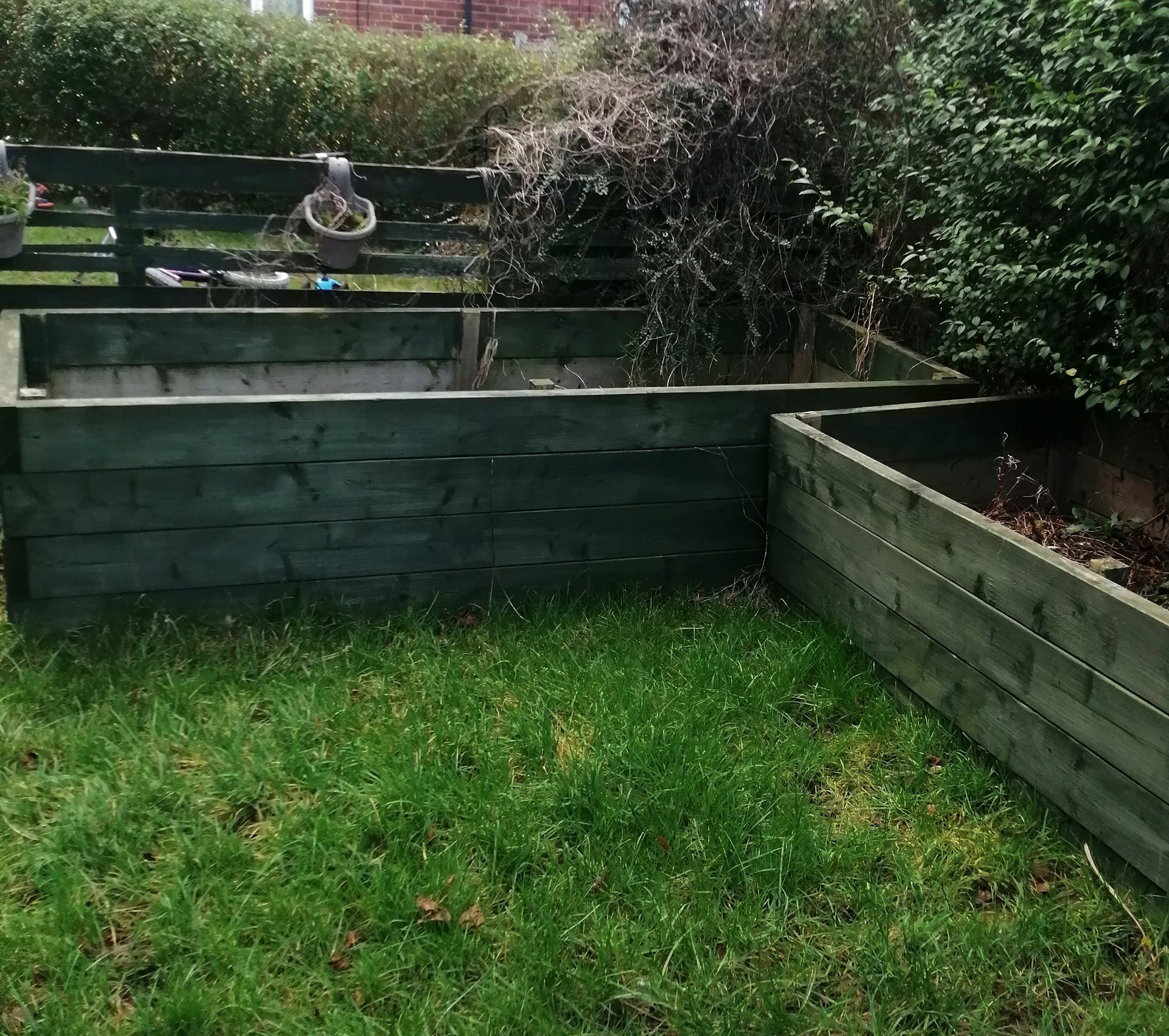
DIY Accessible Raised Garden Beds for Growing Medicinal Herbs
How to build, fill and plant up your own raised garden medicinal plant beds for easy access no matter your mobility abilities.
ACCESSIBILITYORGANIC GARDENINGBEGINNER GUIDES
Gardening offers profound therapeutic benefits, both in the activity itself and in the harvest it yields. For those of us with mobility challenges, the healing connection to plants becomes even more significant—especially when growing medicinal herbs that can support our wellbeing. Today, I'm sharing my journey of how my accessible raised garden beds were built in order to allow me to nurture a thriving medicinal herb garden despite mobility limitations.
Why Raised Beds Are Game-Changers for Accessibility
When I first started experiencing mobility issues, I thought my gardening days might be behind me. Traditional ground-level gardens require kneeling, bending, and sustained periods of uncomfortable positions that can exacerbate pain and fatigue. The allotment board ruled that I could not make my plot accessible with any hard standings and they were against raised beds as well. So I looked at my home and two small gardens.


Raised beds solve many of my challenges by:
Eliminating the need to bend to ground level
Reducing the strain on joints and muscles
Creating a defined workspace that can be approached from a seated position
Allowing for better organisation of plants within easy reach
Providing better soil drainage and control over growing conditions
Less weeding - great for grip issues - and fewer pests, due to being at height
The raised beds I'll describe can be accessed from a wheelchair, used while seated on a garden stool, or approached standing with minimal bending—making them versatile for various mobility considerations.
Designing Your Accessible Medicinal Herb Garden
Before grabbing your tools, spend some time planning your herb garden with these considerations:
1. Location Assessment
Choose a spot that:
Receives 6-8 hours of sunlight for most medicinal herbs
Has a flat, stable surface for safety
Provides easy access from your home
Offers proximity to a water source to avoid carrying heavy watering cans
2. Bed Dimensions
The most accessible raised beds follow these general guidelines:
Height: 30-36 inches from ground level (wheelchair accessible height)
Width: 24-30 inches maximum (allows reaching center from either side)
Length: As needed, but 4-6 feet sections are manageable
Pathways: Minimum 36 inches between beds for wheelchair navigation
3. Material Selection
Consider durability, sustainability, and your budget:
Cedar or redwood: Naturally rot-resistant, chemical-free, but pricier
Composite lumber: Long-lasting, recycled materials, moderate cost
Galvanized metal: Modern look, excellent longevity, mid-range price
Concrete blocks: Affordable, extremely durable, no construction skills needed
DIY Construction: Step-by-Step
Here's how to build a basic accessible raised bed using cedar boards, I had a local builder put mine together for a very reasonable price, as he was just starting out and below is how he did it:
Materials Needed:
2×12 cedar boards (enough for your planned dimensions)
4×4 cedar posts for corners
3-inch deck screws
Drill/driver
Measuring tape and level
Landscape fabric
Hardware cloth (to deter burrowing pests)
High-quality soil mix
Optional: L-brackets for reinforcement
Assembly Instructions:
Prepare the site by removing grass and leveling the ground where your bed will sit
Cut your lumber to your planned dimensions. For a 4'×3' bed at 36" high, you'll need:
Four 4'×12" boards for the long sides
Four 3'×12" boards for the short sides
Four 4×4 posts cut to 36" length
Construct in layers:
Create three or four identical rectangles using the 12" boards
Secure each board to the corner posts using deck screws
Stack and secure the three or four rectangular frames - I have used four.
Add bottom protection:
Staple hardware cloth to the bottom frame to prevent pests
Layer landscape fabric over the hardware cloth
Reinforce as needed:
Add L-brackets at corners for additional stability
For beds over 4' long, add center supports to prevent bowing
Fill with soil:
Start by filling the bottom with logs, this saves you on the amount of soil you and compost you need, but also feeds the soil from the bottom up as it decomposes. Plus, its another barrier to burrowing pests.
Use a mix of 60% topsoil, 30% compost, and 10% perlite for good drainage
Fill in stages, gently tamping down to prevent excessive settling


Ergonomic Enhancements
To make your raised bed even more accessible:
Add a seating ledge around the perimeter using a 2×6 board - alternatively grab yourself one of these bad boys! https://amzn.to/3EAAwWP
Install vertical trellises for climbing medicinal plants like hops or passion flower. Here is a very cost effective option https://amzn.to/43h5g9R
Incorporate tool storage with PVC pipes attached to sides. Alternatively try these hooks attached intermittently along the edges https://amzn.to/4ip65Sd
Add a drip irrigation system to eliminate heavy watering cans, try this one: https://amzn.to/3XsdYyf
Use color-coded plant markers for easy identification, try these: https://amzn.to/4hXlj0W
Choosing Medicinal Herbs for Your Accessible Garden
When selecting herbs, consider growth habits and accessibility:
Easy-to-Grow Medicinal Herbs:
Upper Level (Tallest/Back/North side of Bed)
Echinacea (immune support)
Valerian (sleep aid)
Elecampane (respiratory support)
Middle Level
Calendula (skin healing)
Holy Basil/Tulsi (adaptogen, stress support)
Lemon Balm (anxiety, digestive aid)
Sage (throat, menopausal support)
Front/Edge Level (Shortest/Most Accessible)
Thyme (respiratory, antimicrobial)
Chamomile (calming, digestive)
Mint varieties (digestive, headache relief)
Oregano (antimicrobial, immune support)
Companion Planting Considerations:
Some medicinal herbs enhance each other's growth while others compete. Consider these pairings:
Plant chamomile near basil and mint to enhance their essential oil production
Keep mint contained as it spreads aggressively
Place sage away from cucumber or rue
Combine thyme, oregano, and rosemary as Mediterranean herbs with similar needs
Maintenance Tips for Limited Mobility
Make ongoing care manageable with these approaches:
Mulch heavily to reduce watering and weeding needs
Use long-handled, lightweight tools specifically designed for seated gardening
Try these: https://amzn.to/41ELJyF
Install a timer-based drip irrigation system for automatic watering
Try this: https://amzn.to/3XsdYyf
Plant perennial herbs that don't require annual replanting
Schedule short, frequent gardening sessions rather than exhausting longer ones
Keep pruners and harvest baskets within reach on a rolling cart
Try this one, which also serves as a seat: https://amzn.to/4kooiBe


Harvesting and Processing Accommodations
Create an accessible workflow for your medicinal herbs:
Harvest during cooler hours when you have the most energy, also morning is when medicinal plants are at their most potent
Use ergonomic cutting tools with cushioned handles
Set up a processing station at comfortable counter height
Invest in a good-quality herb drying rack that can be placed at accessible height
Label clearly as you process to avoid confusion
Seasonal Adaptations
Extend your gardening season with these accessible modifications:
Attach hoop house extensions that can be managed from a seated position
Install cold frames with props or hydraulic openers for easy ventilation
Use frost cloth with edge weights rather than pins for winter protection
Create a rolling plant dolly for containers that need to be moved indoors
Final Thoughts
Creating accessible raised beds for medicinal herbs is transforming my relationship with gardening. Beyond the practical benefits of having healing plants within reach, there's profound empowerment in adapting the environment to suit our needs rather than limiting our passions.
Your accessible herb garden will evolve as you discover what works best for your specific mobility considerations. Start small, adjust as needed, and remember that the therapeutic benefits begin the moment your hands touch the soil—long before the first harvest.
Happy gardening!
This blog post is based on personal experience and general knowledge about accessible gardening and medicinal herbs. Always consult with healthcare providers before using medicinal herbs for treatment, and ensure plants are properly identified before use.
